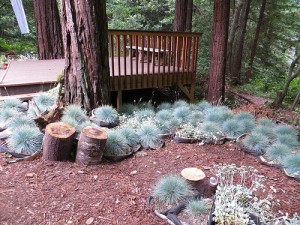
Blue fescue will add pops of color all winter long if you wait until spring to cut down this perennial grass.
The growing season is winding down and you may wonder when to cut down your perennials for best success. These plants last more than one season and may have become untidy. For many, fall is a great time, with the caveat that you need to consider how it will affect the look of your garden overall.
The Basics of Cutting Down Perennials
These types of plants may be trimmed either in spring or in fall. Many people like to do it in fall as part of putting their garden to rest for the season. This can be beneficial for the plant if it has faced problems like leaf diseases or insect damage.
When you do decide to cut them down, leave about three inches of stem instead of cutting it down to the ground so that you do not damage the plant.
Don’t Destroy Your Winter Interest
I grew up in Southern California where plants are perpetually growing and the landscape is always full of vibrant colors. As I discovered later when I moved to a colder region, things can get pretty dull during the winter when not much (if anything) is growing and your yard is covered in snow.
If you do decide to cut down your perennials in fall, you will have to wait until spring’s new growth generates excitement in your garden. Many perennials can add winter interest to your garden with parts like colorful stems, foliage and fruits. The latter can also serve as food for wildlife and birds. Unless
As Cornell University mentions, perennials like “European ginger, bishop’s hat, ferns, Lenten rose, ornamental grasses, and upright sedums (such as ‘Autumn Joy’)” should be cut back in the spring instead of the fall.
Do you cut down your perennials in the fall? Do you have any that provide winter interest?
Image by jinxmcc under a Flickr Creative Commons Attribution-NoDerivatives License


